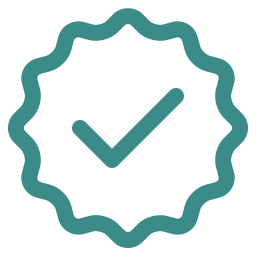Nurturing Wellness: Precautions and Practices for Reformer Pilates During Pregnancy
Are you an expectant mother looking to stay active and fit during pregnancy? Reformer Pilates Machine may be just what you need!
But before you jump into it, it's important to know the safety precautions to ensure a healthy and enjoyable experience.
In this article, we'll guide you through the benefits, modifications, and proper techniques of Reformer Pilates like the Cadillac Reformer for pregnant women.
So grab a mat, take a deep breath, and let's embark on this transformative journey together!
Understanding the Benefits and Risks of Reformer Pilates During Pregnancy
You should be aware of the benefits and risks of doing Reformer Pilates during pregnancy.
Reformer Pilates is a popular form of exercise that uses a specially designed machine like the Elina Cadillac Reformer to help improve strength, flexibility, and overall fitness.
Many pregnant women wonder if it's safe to continue doing Pilates workouts on AeroPilates during their pregnancy, and the answer is that it can be, with some precautions.
One of the main benefits of doing Reformer Pilates during pregnancy using Peak Pilates is that it can help strengthen your core muscles, which can be beneficial for carrying the extra weight of the baby and maintaining good posture as your belly grows.
Using the Merrithew At Home Spx Reformer Bundle can also help improve your balance and stability, which is important as your body goes through changes during pregnancy.
However, it's important to take certain precautions when doing Reformer Pilates during pregnancy.
First and foremost, it's essential to consult with your healthcare provider before starting or continuing any exercise program on a Merrithew V2 Max Reformer.
They can provide personalized advice based on your specific health needs and the stage of your pregnancy.
During pregnancy, your body undergoes hormonal changes that can affect the stability of your joints.
This means that it's important to avoid exercises that put excessive strain on your joints, such as deep squats or high-impact movements.
Additionally, It's Important to Listen to your Body and Modify or avoid any exercises that cause discomfort or pain.
Consulting With Your Healthcare Provider Before Starting Reformer Pilates
Before beginning Reformer Pilates, it's crucial to consult with your healthcare provider to ensure it's safe for you during your pregnancy.
Your healthcare provider is the best person to assess your individual circumstances and provide guidance on whether or not you should engage in Reformer Pilates exercises.
Here are three important reasons why consulting with your healthcare provider is essential before starting Reformer Pilates:
- Personalized Assessment
Your healthcare provider will be able to evaluate your current health status and any pre-existing conditions you may have.
This assessment will help determine if Reformer Pilates is suitable for you and if any modifications need to be made to ensure your safety and the safety of your baby.
- Medical History Considerations
Your healthcare provider will take into account your medical history, including any pregnancy-related complications or previous injuries.
By sharing this information, you can work together to create an exercise plan that's tailored to your specific needs, reducing the risk of any potential harm.
- Monitoring and Support
Your healthcare provider will monitor your progress throughout your pregnancy and can provide ongoing support and guidance.
They can help you adapt your Reformer Pilates routine as your body changes and your pregnancy progresses.
Regular check-ins will ensure that you're exercising safely and effectively.
Consulting with your healthcare provider is the first step in ensuring a safe and beneficial Reformer Pilates experience during pregnancy.
By working together, you can develop a personalized plan that takes into account your unique circumstances.
In the next section, we'll explore modifications for pregnancy and how to adapt Reformer Pilates exercises to accommodate the changes in your body.
Modifications for Pregnancy: Adapting Reformer Pilates Exercises
How can Reformer Pilates exercises be adapted to accommodate the changes in your body during pregnancy?
As an expectant mother, it's essential to modify your Pilates routine to ensure both your safety and the safety of your baby.
By making a few adjustments to your Reformer Pilates exercises, you can continue to reap the benefits of this low-impact workout while minimizing any potential risks.
Firstly, it's crucial to focus on maintaining proper alignment throughout your pregnancy. As your body changes, your center of gravity shifts, which can affect your balance.
To counter this, use props like stability cushions or wedges to support your body and maintain stability during exercises.
Additionally, consider reducing the resistance and intensity of the exercises to avoid strain on your muscles and joints.
Secondly, adapt your Reformer Pilates exercises to avoid lying flat on your back after the first trimester.
This position can put pressure on the vena cava, a major vein that returns blood to the heart, potentially reducing blood flow to you and your baby.
Instead, try performing exercises in a semi-reclined or side-lying position to alleviate this pressure.
Thirdly, listen to your body and modify exercises that cause discomfort or strain.
As your pregnancy progresses, you may need to avoid exercises that involve deep twisting or intense abdominal work.
Instead, focus on exercises that strengthen your pelvic floor and improve posture.
Talk to your Pilates instructor about modifications specific to your needs and stage of pregnancy.
Remember, it's important to consult with your healthcare provider before starting or continuing any exercise routine during pregnancy.
They can provide personalized guidance based on your individual needs and ensure that you're taking the necessary precautions for a safe and healthy pregnancy.
Avoiding High-Impact Movements and Exercises During Pregnancy
To ensure the safety of both you and your baby during pregnancy, it's important to avoid high-impact movements and exercises.
While staying active is beneficial for expectant mothers, certain activities can pose risks to your changing body.
Here are some precautions to keep in mind:
- Steer clear of exercises that involve jumping or bouncing, as these movements can strain your joints and pelvic floor muscles.
Instead, opt for low-impact activities like walking, swimming, or prenatal yoga.
- Avoid contact sports or activities that carry a high risk of falling or injury, such as basketball, skiing, or horseback riding.
Your center of gravity shifts during pregnancy, making it more challenging to maintain balance.
- Skip exercises that put excessive pressure on your abdomen, such as crunches or sit-ups.
These movements can strain your abdominal muscles and potentially harm your growing baby.
Instead, focus on exercises that engage your core without putting stress on your belly, like pelvic tilts or modified planks.
By avoiding high-impact movements and exercises, you can reduce the risk of injury and protect both yourself and your baby.
It's crucial to prioritize your safety and well-being during this special time.
Now that you're aware of the precautions, let's move on to another important aspect of safe reformer Pilates practice: proper breathing techniques. These techniques will help you engage your core muscles effectively and provide a solid foundation for your workouts.
Proper Breathing Techniques for Safe Reformer Pilates Practice
As you engage in safe Reformer Pilates practice during pregnancy, it's important to learn and implement proper breathing techniques.
Proper breathing not only helps you stay focused and centered during your workout, but it also ensures the safety and well-being of both you and your baby.
By maintaining a consistent and controlled breathing pattern, you can enhance your overall experience and maximize the benefits of your Pilates practice.
One of the key components of proper breathing in Reformer Pilates is diaphragmatic breathing.
This technique involves using your diaphragm, a large muscle located below your lungs, to take deep breaths.
To practice diaphragmatic breathing, place one hand on your chest and the other on your belly.
As you inhale, allow your belly to rise while keeping your chest relatively still. Then, as you exhale, let your belly fall.
This type of breathing encourages relaxation, reduces tension, and promotes better oxygen flow to your muscles.
In addition to diaphragmatic breathing, it's important to synchronize your breath with your movements during Reformer Pilates exercises.
As you perform each movement, inhale to prepare and exhale as you exert effort or engage your muscles.
This coordinated breathing technique helps you maintain proper form, control your movements, and prevent any unnecessary strain or tension.
Listening to Your Body: Recognizing Signs to Modify or Stop Reformer Pilates
When practicing Reformer Pilates during pregnancy, be attentive to your body and aware of any signs that may indicate the need to modify or stop your workout.
It's important to listen to your body's signals and make adjustments as needed to ensure a safe and comfortable exercise experience.
Here are some signs to watch out for:
- Pain or Discomfort
If you experience any pain or discomfort, especially in your lower back, pelvis, or abdomen, it's essential to modify or stop your workout.
These sensations can indicate excessive strain on your body and may be a sign that certain exercises aren't suitable for you at this time.
- Shortness of Breath
Pregnancy can naturally cause shortness of breath due to changes in lung capacity and increased demand for oxygen.
However, if you find yourself excessively out of breath during Reformer Pilates, it's best to take a break or modify your movements to prevent overexertion.
- Dizziness or lightheadedness
Feeling dizzy or lightheaded during your workout is a clear indication that you should pause or stop exercising.
This could be a sign of dehydration, low blood sugar, or even a drop in blood pressure.
It's crucial to prioritize your safety and well-being, so listen to your body and rest if needed.
Remember, every pregnancy is unique, so it's important to consult with your healthcare provider before starting or continuing any exercise routine.
They can provide personalized guidance based on your specific needs and any potential risk factors.
Let's explore some postnatal considerations and how to safely ease back into your practice.
Postnatal Considerations: Transitioning Back to Reformer Pilates After Giving Birth
Start by gradually reintroducing Reformer Pilates into your routine, beginning with one to two sessions per week and listening to your body's cues for any signs of discomfort or overexertion.
After giving birth, it's important to ease back into your fitness routine, especially when it comes to Reformer Pilates.
Your body has just gone through a significant experience, and it needs time to recover and rebuild strength.
Before you start, it's crucial to consult with your healthcare provider to ensure you're ready for physical activity postpartum.
They can provide guidance and determine if there are any specific considerations or restrictions for you.
Once you have the green light, take it slow and listen to your body.
During your initial sessions, focus on regaining core strength and stability, as well as improving your posture and alignment.
Pay attention to any discomfort or pain, as this may indicate that you need to modify certain exercises or take a break.
Remember, your body is still healing, so be patient and give yourself time to rebuild strength gradually.
As you progress and feel more comfortable, you can slowly increase the frequency and intensity of your Reformer Pilates sessions.
However, it's important to continue listening to your body and adjusting accordingly.
If you experience any pelvic pain, bladder or bowel control issues, or any other concerning symptoms, it's vital to seek professional advice.
Postnatal Reformer Pilates can be a great way to regain strength, improve flexibility, and promote overall well-being after giving birth.
Just remember to start slowly, listen to your body's cues, and prioritize your recovery.
With time and consistency, you'll be able to safely and effectively incorporate Reformer Pilates back into your postpartum fitness routine.
Your body is amazing, and it deserves the care and attention it needs during this transition period.
Frequently Asked Questions
Can I Start Reformer Pilates During Pregnancy Without Consulting My Healthcare Provider?
Starting Reformer Pilates during pregnancy without consulting your healthcare provider may not be advisable.
It's important to prioritize your safety and that of your baby.
Your healthcare provider can assess your individual circumstances and provide guidance based on your specific needs.
They can help determine if Reformer Pilates is suitable for you during pregnancy and if any modifications or precautions are necessary.
Always consult with your healthcare provider before starting any new exercise regimen during pregnancy.
Are There Any Specific Exercises That Should Be Avoided During Reformer Pilates While Pregnant?
During reformer Pilates while pregnant, there are certain exercises you should avoid.
These exercises can put stress on your abdomen, and potentially harm you or your baby.
It's important to consult with your healthcare provider before starting any exercise program, including reformer Pilates.
They can provide guidance on which exercises are safe for you during pregnancy.
How Can I Modify Reformer Pilates Exercises to Accommodate My Changing Body During Pregnancy?
To modify reformer Pilates exercises during pregnancy, you can make a few adjustments to accommodate your changing body.
First, avoid lying flat on your back after the first trimester as it can restrict blood flow to the baby.
Instead, try lying on your side or using props for support.
Additionally, focus on exercises that strengthen your core and pelvic floor muscles, while avoiding any movements that strain your abdomen.
Always listen to your body and consult with a qualified instructor for personalized guidance.
What Are the Signs That I Should Look Out for During Reformer Pilates That Indicate I Need to Modify or Stop?
During reformer Pilates, it's important to be aware of signs that indicate you need to modify or stop.
Listen to your body!
If you experience any dizziness, shortness of breath, or intense pain, it's a sign to take a break.
Also, if you feel any pressure or discomfort in your belly, it's best to modify the exercise or avoid it altogether.
Remember, your safety and the health of your baby come first.
Trust your instincts and make modifications as needed.
How Soon After Giving Birth Can I Start Practicing Reformer Pilates Again?
After giving birth, it's important to give your body time to heal before jumping back into reformer Pilates.
Your doctor will be the best person to determine when it's safe for you to start practicing again.
They'll consider factors such as the type of delivery you'd and how well you've recovered.
It's crucial to listen to your body and take it slow when you do start exercising again, making sure to modify any movements as needed.
Conclusion
In conclusion, when it comes to practicing reformer Pilates during pregnancy, it's crucial to prioritize safety and consult with your healthcare provider.
By making necessary modifications and avoiding high-impact movements, expectant mothers can still benefit from this form of exercise.
Remember to listen to your body and adjust or stop as needed.
Postnatal considerations should also be taken into account when transitioning back to reformer Pilates after giving birth.
Your journey to a healthy and fit pregnancy awaits!




